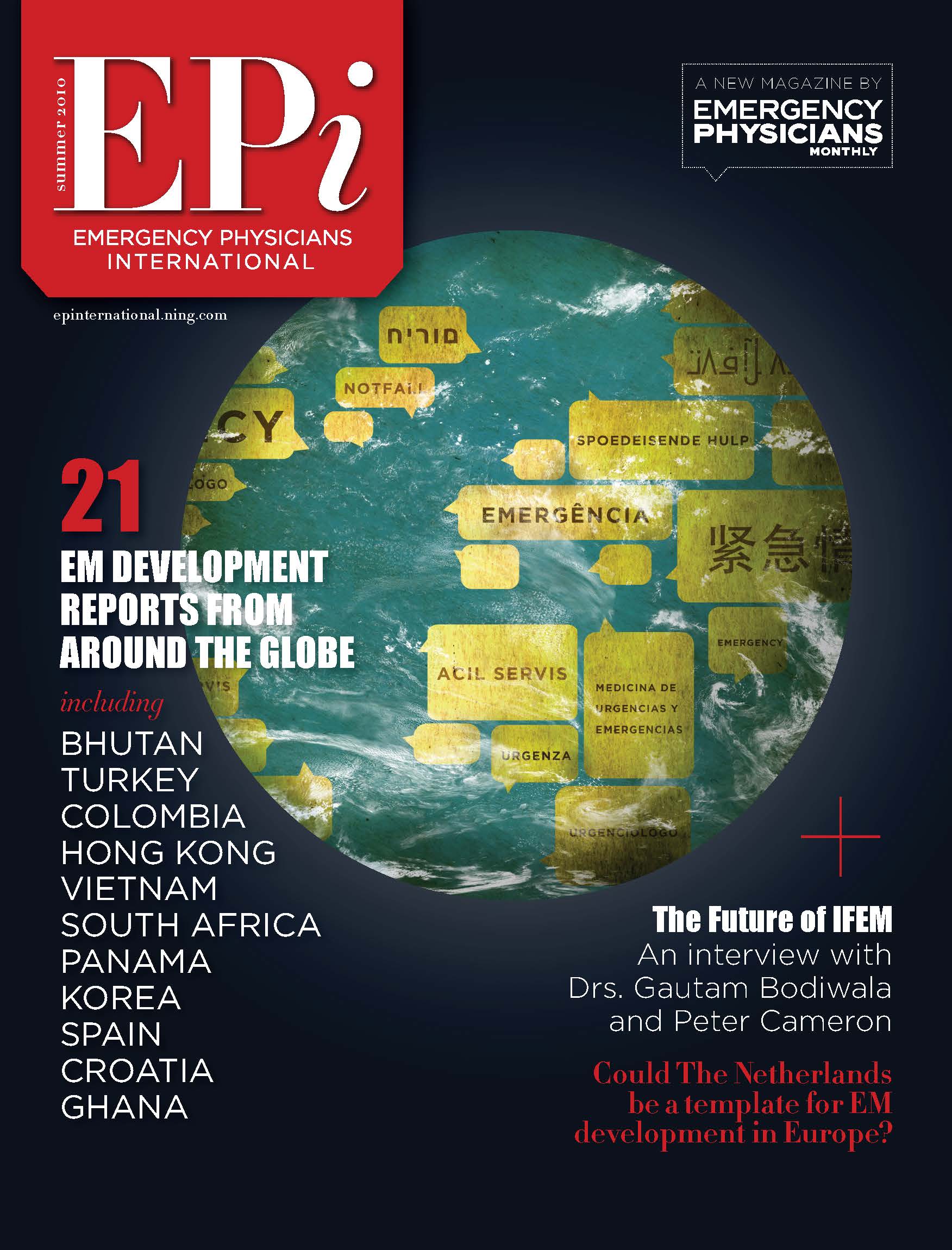Rural Emergency Medicine: "Strong Until They’re Not"
When people think of Washington State, they usually think of rain, evergreen trees, and the city of Seattle. Just 90 minutes away from the city, the Kittitas Valley houses the high desert city of Ellensburg, known for timothy hay production, The Ellensburg Rodeo, and other emblems of small town America. Once a year, alongside most of the Northwest, the town shuts down while the world burns around it during wildfire season. Dr. Kenneth Lindsey offered his experiences at Kittitas Valley Healthcare (KVH) as a window into the Valley.
Setting the Scene
KVH has a small, nine-bed emergency room in Ellensburg, Washington. Nestled in alongside three significant highway junctions, it is a common place for cross-state travellers to stop on their commutes for a variety of needs. Approximately 30,000 cars pass by the city on a daily basis, and the highway runs by houses, with only an occasional stop sign to steady the cars. As a result, there are car crashes on a regular basis. It has been a long-term goal to brainstorm ways to mitigate this problem, but they have largely been to no avail. Despite this need, KVH has minimal specialists, due to its status as a small, rural hospital, so these traumas are left to general emergency physicians and their few surgical specialists to process, stabilize, and send off to Seattle or elsewhere for advanced treatment. On average, about 10-20% will be cases KVH is not equipped to handle, that must be stabilized for treatment elsewhere. Between the car crashes, the local university, and the aging population, KVH has significantly more emergency traffic than a typical hospital of its size, with about 15,000 visits per year (typical would be about 3-5,000).
Kittitas Valley is home to a large ranching and farming population, and the older generation values tenacity, and independence. These are “strong farmers and ranchers until they’re not and need emergent medical care,” says Lindsey. With the lack of specialists and other resources inhibiting KVH’s ability to care for everyone, patients are caught between priorities: do they have resources to be transferred? Is it worth the risk of transferring? How does one decide whether to stay home and cherish their last moments with family, or risk a lonely death en route, in hopes of getting a few more years of life? In Kittitas County, these are questions many have had to answer.
Systemic Support: Wildfires, COVID, and Everything in Between
In this tight-knit community, support is everything. Depending on the impending disaster, this is operationalized differently. Dr. Lindsey was quick to praise the local public health offices, emergency medical services, the fire department, local government, and all the other pieces of support, and noted how they make healthcare possible in Ellensburg.
The systems in place are quick to partner with Dr. Lindsey’s emergency department when necessary. They provide information for prevention, clear evacuation routes as needed, and other general information about everything from Norovirus outbreaks to Coronavirus, and natural disasters like wildfires. However, the way the community engages with each of these issues is starkly different. Dr. Lindsey noted how in some ways, the fires are easier to manage medically because people respond intensely to them. When people can smell smoke in the air, they tend to stay inside and out of the streets, which contrasts with the response to Coronavirus and other seemingly intangible health crises.
Because of the history with fire and patients’ chronic pulmonary conditions, KVH knows a lot about respiratory issues. Despite this familiarity with ventilators, etc., they were still put into a bind with COVID-19. While some of the responses parallel one another, the fires tend to affect individuals, whereas the pandemic of course affects everyone. All of the sudden, the tiny hospital had to rework the placement of their beds, the protective equipment physicians use, and the social implications of every patient’s entrance into the hospital. Additionally, they have profoundly felt the impact of cultural norms around hospitals as resources. With the fires, KVH is the first place people go, whether for burns or respiratory difficulty. It has been a challenge to remind people that with the pandemic, it is important to discourage attendance in the hospital due to the infectious nature of Coronavirus. In the middle of August, there was no way to know whether each cough was an allergy, a response to smoke, or COVID-19. The need to simultaneously bring people in and set unique boundaries creates tension, particularly in Kittitas Valley, where the pandemic and annual natural disasters create parallel symptoms that merit very different responses.
The problem is further complicated by the fact that in the small town, KVH is the only resource within easy driving distance. There is no way to easily divide the patient population and send patients with specific needs to different places and to different specialists in the ways that are possible in a metropolitan area.
Rural Medicine Challenges
In small towns of the United States, medical facilities lack the breadth of resources that urban areas have. When patients come in, the ER physicians must be prepared to respond, whether the patient is a child with a cold or a car crash victim who needs orthopedic surgery. Although KVH can meet basic emergency surgical needs, they do not have some notable common specialties like cardiology, neurology, or pediatrics. Around 70% of rural emergency physicians in the US are over the age of 55, so the gaps in hospitals’ needs are only going to continue to grow as time goes on.
The lack of hospital resources poses a challenge when recruiting recent graduates. As new doctors come from cities, they are intimidated by the need to think on their feet and solve a wide range of issues alone, without a complete set of specialties and ancillary services at their fingertips. Stabilization is key, not just in the moment, but in preparation for the multi-hour journey to the nearest big hospital, which shifts the work’s focus from the holistic problem-solving most residents have learned. Because of the aging rural physician population and hard sell to up-and-coming physicians, many rural hospitals are “proverbially dying for physicians to come practice,” says Dr. Lindsey.
Growing the Future: Education
The problem of rural hospital understaffing is a systemic one. The issue begins in the education system, and that is where the solution starts as well, says Lindsey. Currently, approximately 80% of residency graduates in the US stay within 50 miles of their program to work. Having all the top programs in cities reifies the stigma against rural medicine, and discourages young doctors from seeing what rural programs have to offer. The gap in emergency medicine is particularly enormous, despite the fact that open rural jobs are more numerous than urban ones.
With COVID-19 has come a push to get out of cities, and it includes young professionals. To meet this social demand, along with solving the problem of filling rural hospitals’ staffs, Dr. Lindsey emphasized that it is integral to develop rural programs that entice people. When residents learn about the program in Ellensburg, they get excited because “[the KVH program] lets them see patients and do things, whereas at [bigger programs], they shadow”. It is important to emphasize this distinguishing factor, and prioritize rural medicine in program development. There are rural programs for general surgery, family medicine, and a number of other specialties, but there is a huge gap for rural emergency medicine. If we want sustainable care in these communities, that gap must be filled sooner, rather than later. All the parts of emergency medicine matter, and there are steps we need to take to ensure that the rural emergency physicians working to stabilize patients suffering from automobile trauma, wildfires, COVID-19, and everything in between, have the tools they need to offer the top possible service.










